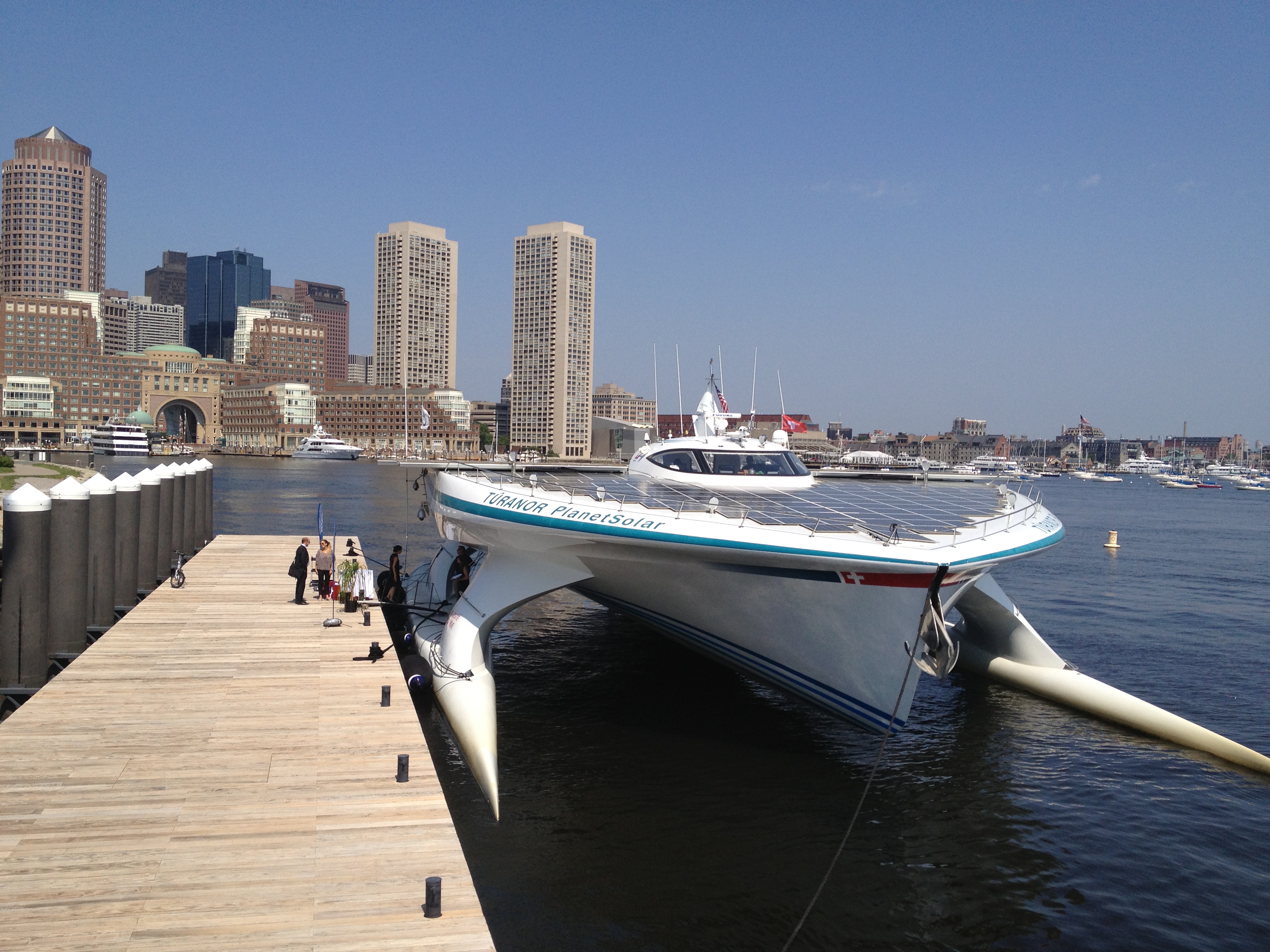The Future of Solar and Wind Powered Shipping
People like to build solar whatnots, even if they don’t make much practical sense. Solar cars. Solar planes. This week I stepped aboard the world’s largest solar-powered ship, a 100-metric-ton catamaran that, last year, motored around the world without using any fuel. Now it’s being used for a scientific expedition—the fact that it doesn’t emit exhaust gases makes it good for collecting data about the ocean and atmosphere.

Exclusively solar-powered ships almost certainly aren’t the future of shipping, but solar power could help reduce emissions.
The solar boat I toured, the Turanor (the name comes from J.R.R. Tolkien’s fantasy books) weighs about 100 tons, and to provide enough power for an average cruising speed of just 5 knots, requires 29,124 of some of the most efficient silicon solar panels available, many of them cantilevered out past the edge of the boat. It’s made from expensive, lightweight composite materials. Container ships transport as much as 150,000 tons of freight and travel much faster.
“Personally I don’t believe solar energy is appropriate for big ships and commercial traffic. It would be a dream, but it’s crazy. You would not get enough power,” says Gerard D’Aboville, the Turanor’s captain. “You can go around the world with solar energy. But it’s not the future of boats. It’s more a symbolic gesture.”
But while solar power likely won’t replace fossil-fuel power outright in large cargo ships, it could work for some smaller ships, or to help lower fuel consumption on the big ones. D’Aboville says solar panels might work well for small ferries—indeed a company called SolarSailor already operates such ferries. One option is combining solar and wind power to produce some or all of the power for a ship.
A recent demonstration project used solar panels to provide about 10 percent of the electricity for a cargo ship to reduce emissions from the low-grade fuel such ships use. Such systems could also reduce shipping costs by reducing the amount of fuel consumed. Prices for fuel are so high now that some shipping companies are slowing down their ships to the point that they’re travelling slower than old sail-powered ships. That could open an opportunity for wind powered ships, at least for some applications.
Keep Reading
Most Popular
Large language models can do jaw-dropping things. But nobody knows exactly why.
And that's a problem. Figuring it out is one of the biggest scientific puzzles of our time and a crucial step towards controlling more powerful future models.
The problem with plug-in hybrids? Their drivers.
Plug-in hybrids are often sold as a transition to EVs, but new data from Europe shows we’re still underestimating the emissions they produce.
Google DeepMind’s new generative model makes Super Mario–like games from scratch
Genie learns how to control games by watching hours and hours of video. It could help train next-gen robots too.
How scientists traced a mysterious covid case back to six toilets
When wastewater surveillance turns into a hunt for a single infected individual, the ethics get tricky.
Stay connected
Get the latest updates from
MIT Technology Review
Discover special offers, top stories, upcoming events, and more.